- This topic has 31 replies, 7 voices, and was last updated 12 years, 9 months ago by
Nicolas BUISSON.
-
AuthorPosts
-
March 4, 2012 at 1:13 am #4259
Nicolas BUISSON
ParticipantHi everyone,
To start I really thank Peter to put in contact with OLivier Perrin. Thank you very much !
It help me to get the most beautifull parosphromenus I’ve never seen before. I came to Olivier house to take a Parosphromenus that I searched for one year and an half. But I was really surprise because he gave me for extraordinary species, So for 13 days i am the happiest breeder of :
– Parosphromenus alfredi
– Parosphromenus opallios
– Parosphromenus parvulus
– Parosphromenus tweediei.
Olivie gave me the paramèters of the water where he caught tweediei, alfredi and parvulus, so I try to reproduce those parameters and it works ! I observe the spawning of tweediei, opallios, alfredi, and today parvulus and I have fry of the three first species. they are in 4 25L tanks with peat garden (at pH 3.8) a lot of leafs, and ceratopteris cornuta
It is really hard to take pictures so excuse me, I will put other next time
[url=http://photorapide.com/index.php?photoName=03a1cq.jpg&photoId=11513]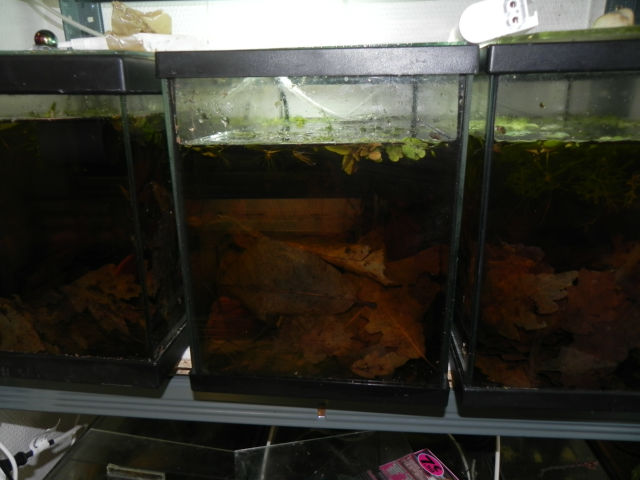
[url=http://photorapide.com/index.php?photoName=03mdhs.jpg&photoId=11514]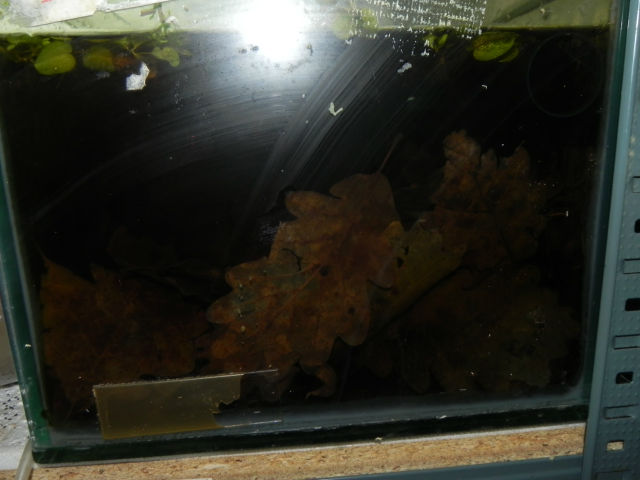
P. alfredi female, the male just go aways when I take the pics :angry: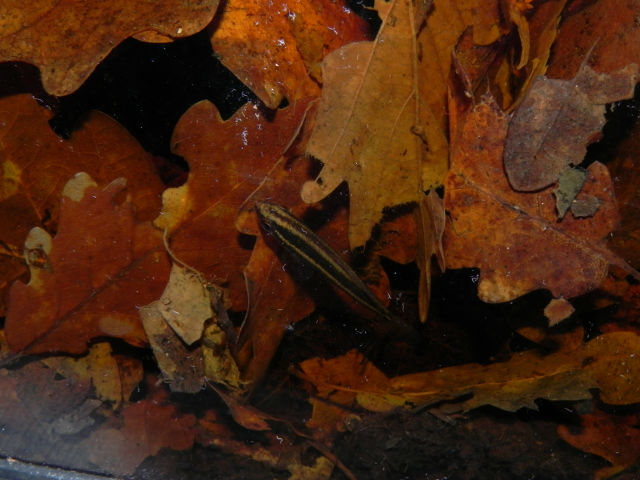
P. tweediei female, the male is keeping his eggs….
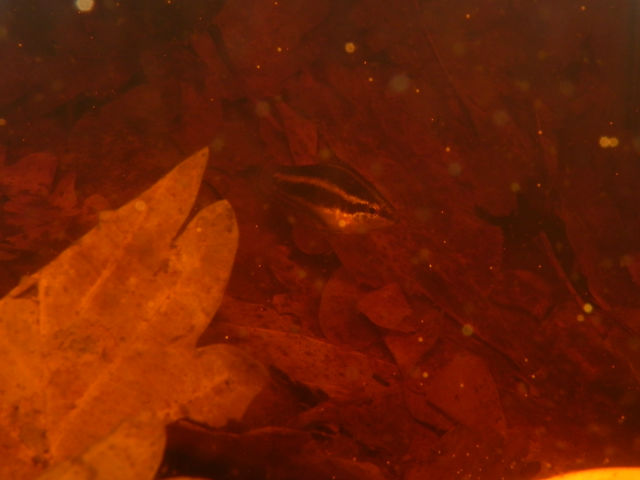
P. parvulus TangKilling
[url=http://photorapide.com/index.php?photoName=01q1gf.jpg&photoId=11194]
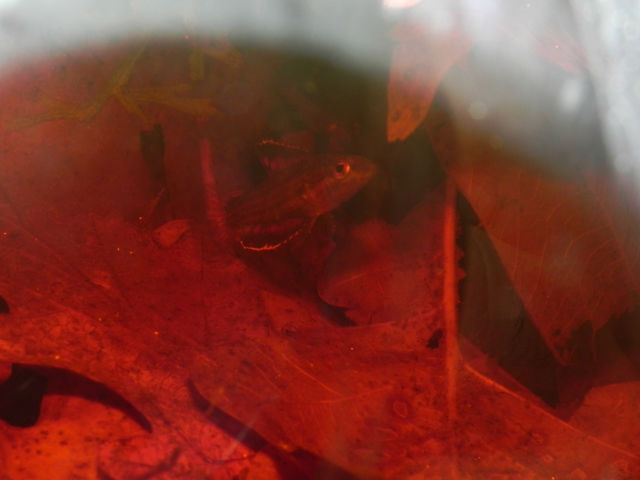
[url=http://photorapide.com/index.php?photoName=013ygu.jpg&photoId=11196]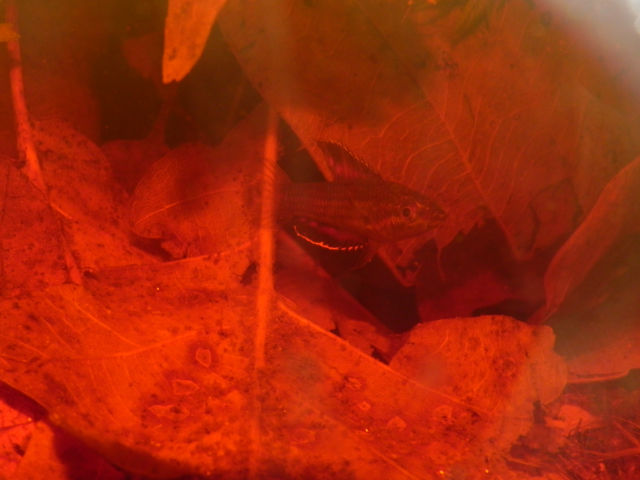
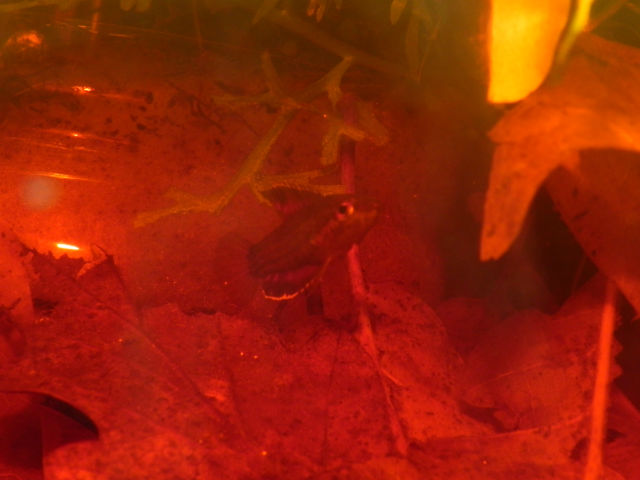 March 4, 2012 at 2:20 am #4260
March 4, 2012 at 2:20 am #4260Peter Finke
ParticipantNico, I just replied to you with a long note, but then a sudden interruption by a friend forced me offline and – since I had not saved anything, all was gone. So I try to write some of it again.
You are a happy man and we are happy people since we have Olivier Perrin. He is a remarkable man, a musician who is one of our best breeders of licorice You are very lucky to have received that four species from him, and now (only days later) even fry of all already!
All those species are of great value to the project: 1. opallios, since we have only fish from the trade (without location) which are somewhat frail; mine have died some weeks ago, others do not better. You have fish with location, that’s good! Then 2. tweediei. The original location Ayer Hitam has been fully destroyed since long. There are some locations left, but they are severely anthropogentically transformed; the fish live at the edge of their possibilities. And they give us puzzles to solve: When Peter Beyer caught them in 2008, they were all red (as they “should” be). When he caught them at the same place in 2009 they were all green … How are yours? Then 3. alfredi: Formerly, we had several variants form several places. Now there are only a few bad places left and often the animals are frail too. And there is an additional puzzle: Some travellers tell us that just at the main alfredi-place swim nagyi! This should be impossible, but it obviously is not. How did the nagyi get there? And will they suppress the alfredi? We don’t know. So be happy and breed them! And the biggest puzzle: 4. parvulus . Formerly we knew only one or two tiny locations. But since Horst Linke’s visits in 2007 and 2008 we know that parvulusseems to be the most widespread licorice gourami of all! Inhabiting a huge area of hundreds of square kilometers.
But: The newest information comes from geneticist Dr. Rüber (Switzerland). Investigation of parvulus from different locations display very different genetic codes! Are several species involved? Nobody knows.
My males (from Babugus) develop very red anals and dorsals, that I have never seen before. Most males develop only a few red dots (see Horst’s picture in the recent “Amazonas”-issue).
Therefore you are a lucky guy. Try to raise that fry of all your four rare species, and the we must distribute it to the best breeders we have!!
So, I think now I have reconstructed most of my message that I lost half an hour before.March 4, 2012 at 3:24 am #4261Nicolas BUISSON
ParticipantHi Peter, thank you, all of those species I owe to you. your advice are very precious for me.
All I know, is that my tweediei are from Pekan, I think it is in the west of Malaysian penisula, it is a red strain of tweediei I find they very bigger than the tweediei i saw before.
The Parvulus are for Tangkilling coled to Palangkaraya, The male has red dorsal and anal fins, but the water is to dark to show you te color.
The alfredi do not know where they from, but it is Peter Beyer who caught them
The opallios is an old strain, there are not a lot of Paros still alive.I will do my best, in a first time I have to give back young paros to Olivier, and after I will diffuse, I hope that I will continue to keep that luck.
Thank youMarch 4, 2012 at 3:30 am #4262Nicolas BUISSON
ParticipantThe most fascinating is the parade in males, head down for tweediei, and opallios afredi, color fins that contrasts with the body. A parade totally differene in parvulus, waw!
March 4, 2012 at 12:45 pm #4263Peter Finke
ParticipantIf the opallios are an old strain, it is most likely that they are from Sukamara. If the alfredi are from Peter Beyer, they are from Sedili. Yes, the difference in parade-types is most striking. It is highly probable that the head-up licorice gouramis do belong to another genus, at least a sub-genus. The great puzzle is sumatranus. It looks a bit like the head-down paraders, but it’s parading head-up like parvulus and ornaticauda. And there seem two types to exist, a sleak one and a stouter one. But the male doesn’t perform that crazy zig-zag-dance around the female as the other two do.
March 5, 2012 at 3:53 am #4265Bill Little
ParticipantNico — I have attempted to improve the quality of the images a little bit. I hope you don’t mind. I have been watching your success. I hope you keep us posted
March 5, 2012 at 5:46 am #4266Nicolas BUISSON
ParticipantThank you 🙂
Now it is my linkei which are spawning tonight, Peter this is also a strain that Olivier caught in 2005
It is amazing the growth speed of those fishes, I have fry of 6 mm which are geting out of the leafs tonight they may have a monthMarch 5, 2012 at 2:41 pm #4267Peter Finke
ParticipantThe newest informations from the geneticists say that they have very different results on the genetic codes of different samples of “linkei“. I am not really surprised since there are at least three phenomenologically different linkei: 1. silvery body and fins, 2. brownish body and fins, 3. ten or mor small red dots around the black spots on the body’s side. The spec. “Seruyan” may be included here.
So keep them separated from other linkei. At present we know all these as “linkei”.March 5, 2012 at 8:24 pm #4268Nicolas BUISSON
ParticipantOk do not worry I only have the Olivier’s linkei
I am too sick to go to my lab today, so I take my cam : The parosphromenus tweediei :
excited male
[url=http://photorapide.com/index.php?photoName=05p96h.jpg&photoId=12037]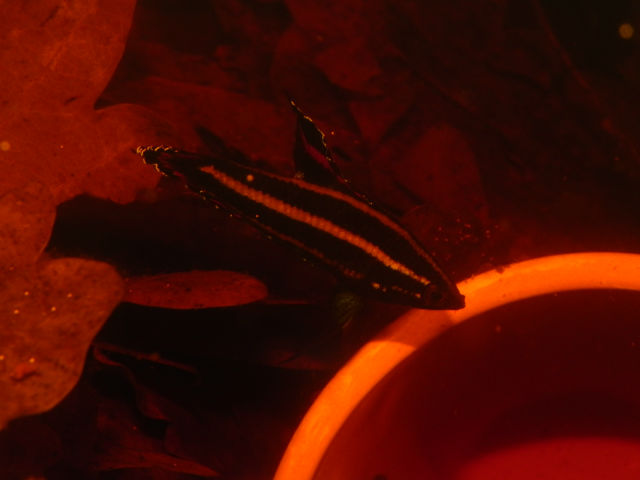
[url=http://photorapide.com/index.php?photoName=050tdm.jpg&photoId=12038]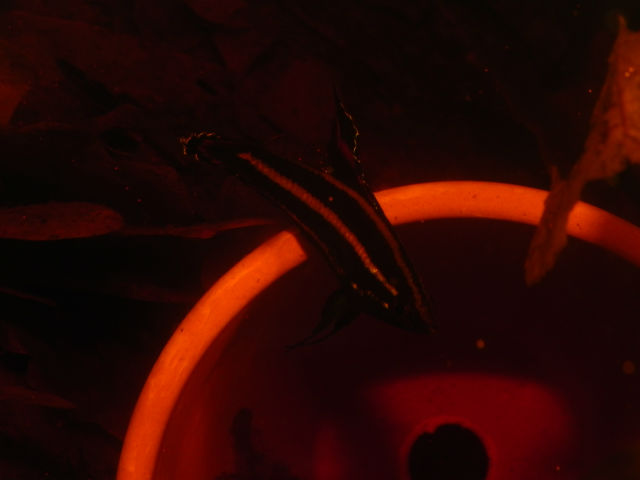
[url=http://photorapide.com/index.php?photoName=05fr4d.jpg&photoId=12039]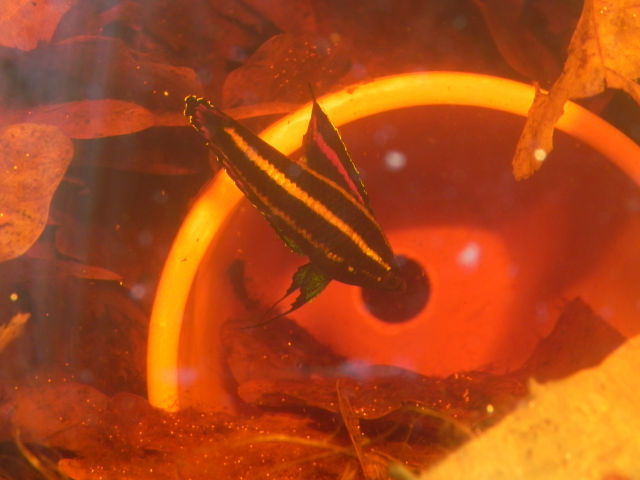
female very round
[url=http://photorapide.com/index.php?photoName=05f09u.jpg&photoId=12040]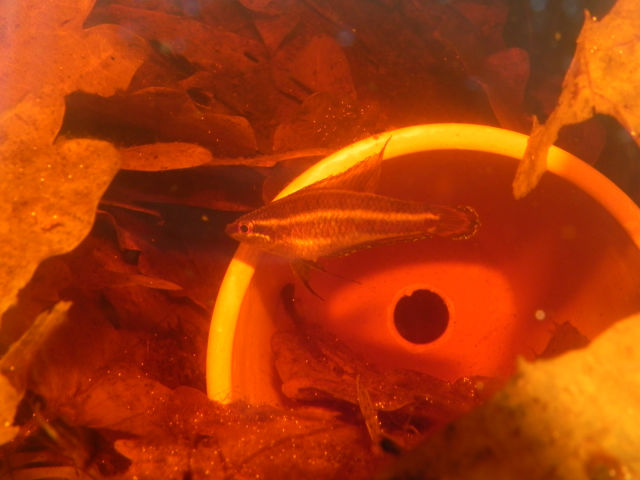 March 7, 2012 at 2:39 pm #4269
March 7, 2012 at 2:39 pm #4269Nicolas BUISSON
ParticipantHi, the male parvulus is still defending te territory where they spwaned two days ago, I can not see anything, but he is very aggressive towards the female when she approaches. I will wait.
Keep hope… :unsure: I put some paramecium for a first food, it is Olivier who give me those african paramecia, I use themm for my other fish like Dario and Diapteron.March 7, 2012 at 6:08 pm #4270Peter Finke
ParticipantP. parvulus as P. ornaticauda may be a bit difficult. Sometimes, it works at the outset, but sometimes it will not. It would be of advantage if you could look into the cave in order to see what happens with the eggs. Could they be fixed at the top of the cave by the male or do they sink to the bottom again and again? This is probably due to wrong (too hard) water. Do they disappear after one or two days? Mostly it is impossible to get the cause clear. But there are observations (e.g. from Horst Linke and myself) that a very low pH could help. Master-breeder Günter Kopic once had success only with a pH of 2.8!! This pH has been proven by control-measurements with several electronic equipment. However, I would not repeat that experiment. But a pH from 3.0 on upwards is surely possible. In my case the eggs did no longer disappear when I lowered the pH from about 5.3 to 4.4.
But there can be quite a number of other causes. In your case everything may be in order. Two days after spawning the young are not hatched.March 8, 2012 at 7:20 am #4276Nicolas BUISSON
ParticipantHi Peter,
I am just arrived, the male parvulus is keeping three non swimming larvae, he transferts the larvae in another place, so I can see them, I will try pics, in some minutes, I am preparing their lunch : artemia nauplii.the male tweediei is keeping larva too, he is chasing away the female : two pics :
[url=http://photorapide.com/index.php?photoName=07bpr1.jpg&photoId=12636]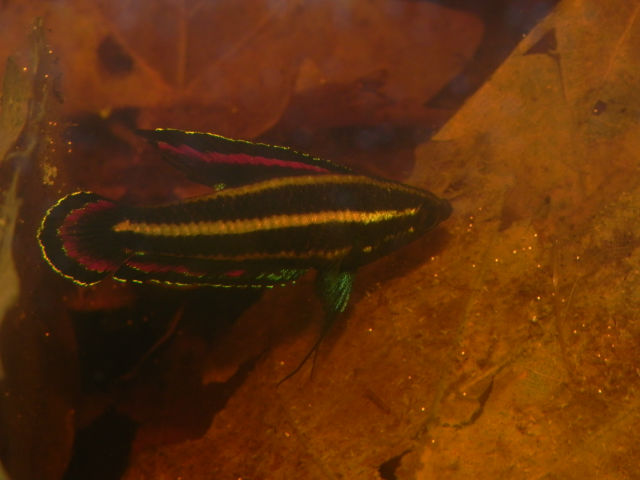
[url=http://photorapide.com/index.php?photoName=077biq.jpg&photoId=12637]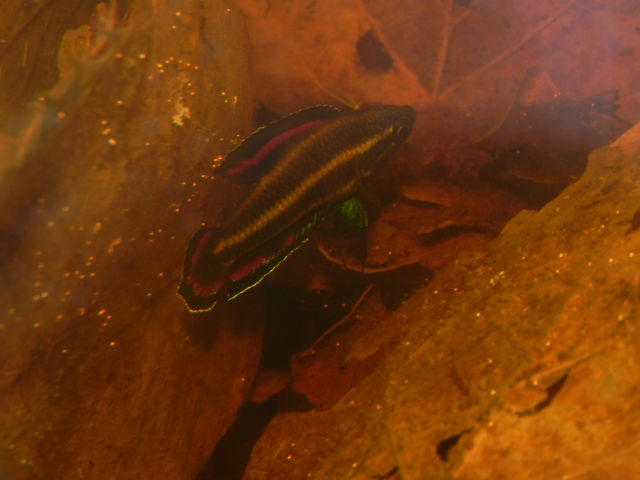 April 9, 2012 at 9:10 pm #4337
April 9, 2012 at 9:10 pm #4337zahar
Participant[quote=”Peter Finke” post=915]P. parvulus as P. ornaticauda may be a bit difficult. Sometimes, it works at the outset, but sometimes it will not. It would be of advantage if you could look into the cave in order to see what happens with the eggs. Could they be fixed at the top of the cave by the male or do they sink to the bottom again and again? This is probably due to wrong (too hard) water. Do they disappear after one or two days? Mostly it is impossible to get the cause clear. But there are observations (e.g. from Horst Linke and myself) that a very low pH could help. Master-breeder Günter Kopic once had success only with a pH of 2.8!! This pH has been proven by control-measurements with several electronic equipment. However, I would not repeat that experiment. But a pH from 3.0 on upwards is surely possible. In my case the eggs did no longer disappear when I lowered the pH from about 5.3 to 4.4.
But there can be quite a number of other causes. In your case everything may be in order. Two days after spawning the young are not hatched.[/quote]Hello guys. Sorry for disappearing and now barging in. Kind of held back by tonnes of work lately.
Anyway just to add in a bit on my recent experience with P parvulus; thanks again to Olivie “Olie” Perrin.
I has 3 pairs in a tank and had the first spawning (2 pairs) in November which coincide with the monsoon season. Another pair spawned last month, again it was raining for a couple of days before I notice a clutch of eggs. On both occasions, the temperature was at about 24-25C (it’s usually round 27-29C on most of the days)and the pH was noted to be about 4.5-5.0.
At the moment got 4 fry from the first spawn and 8 from the last brood. Hmm..not that difficult I think. Hmmmm.. :whistle:June 7, 2012 at 4:35 am #4400Nicolas BUISSON
ParticipantNest of P. parvulus
[url=http://www.photorapide.com/index.php?photoName=06yakp.jpg&photoId=43087]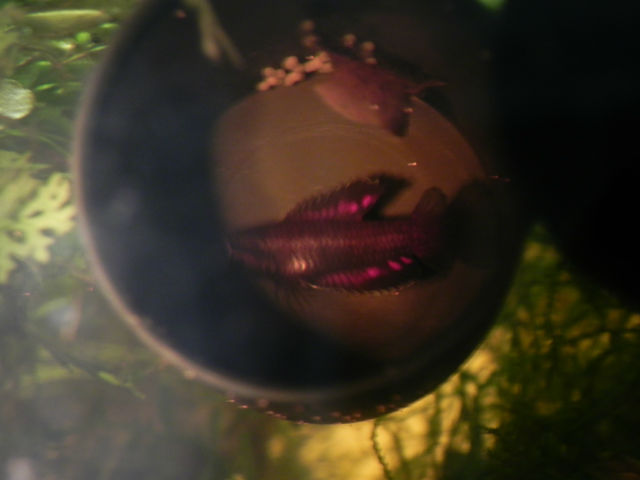
[url=http://www.photorapide.com/index.php?photoName=06ieav.jpg&photoId=43089]
[url=http://www.photorapide.com/index.php?photoName=06mp6m.jpg&photoId=43085]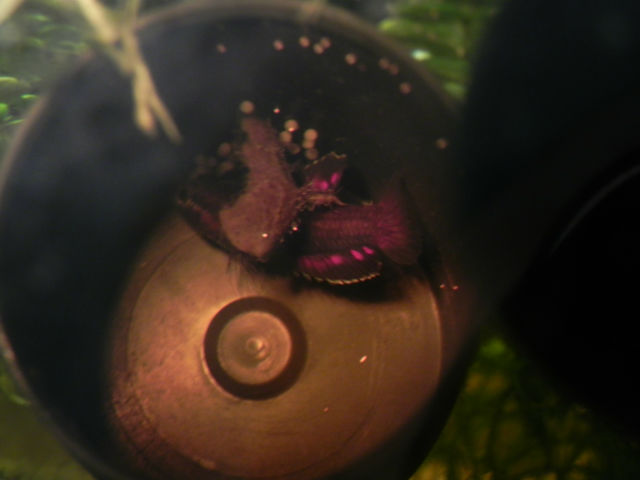
[url=http://www.photorapide.com/index.php?photoName=06f5n7.jpg&photoId=43088]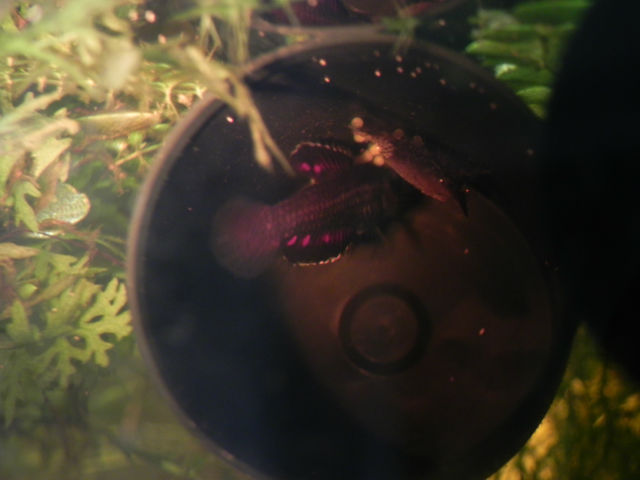
Sorry for the first picsJune 7, 2012 at 5:07 am #4401Bill Little
ParticipantNico are those film canisters? I really can’t judge the size of the container from the photos.
-
AuthorPosts
- You must be logged in to reply to this topic.

